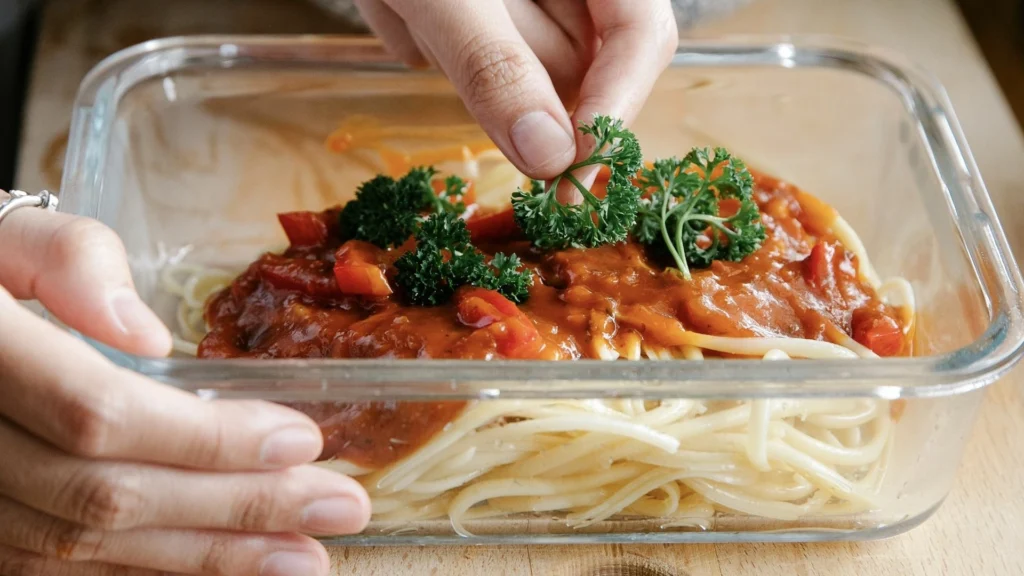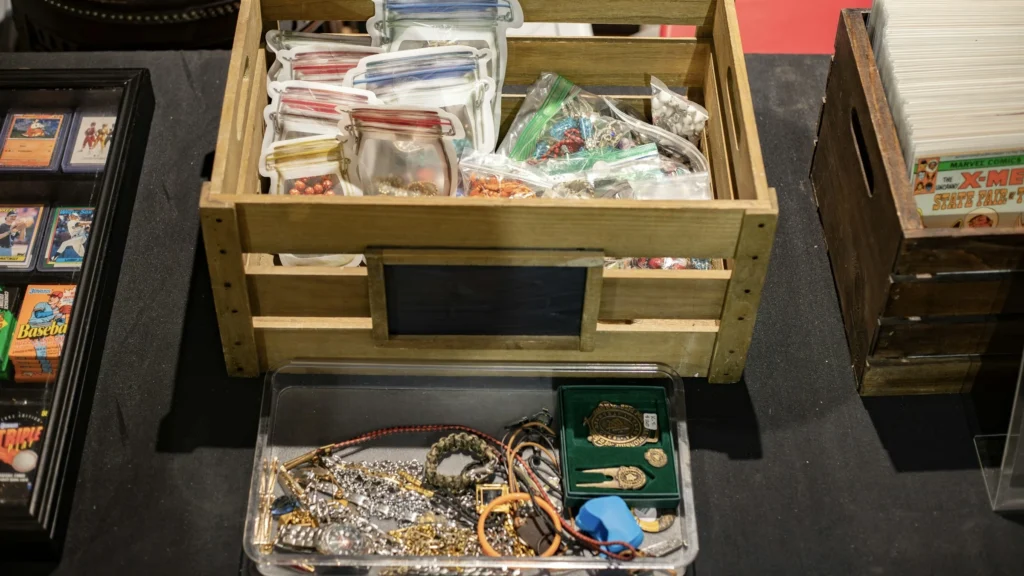Superb Guide to Meal Prep Containers – Selecting the Best Option for Your Needs

There are lot’s of confusing choices when it comes to your perfect and personal meal prep container.
But it doesn’t have to be hard to pick the perfect one for you. And I’m going to help you make a decision, today.
Meal prepping has become an essential part of modern lifestyles. Benefits include: helping people save time, eat healthier, and reduce food waste. Whether you’re a fitness enthusiast, a busy professional, or a family meal planner, having the right container can make all the difference.
With countless options available—plastic, glass, stainless steel, and silicone—it can be overwhelming to pick the best one for your needs. This guide will walk you through everything you need to know about meal prep containers, from their benefits and key features to top brands and best storage practices.
I’m confident that by the end of this article, you’ll have all the information necessary to make an informed decision and elevate your meal prep game.
Types of Meal Prep Containers: Finding the Right Fit
When selecting a meal prep container, understanding the different materials available is crucial. Each type offers unique benefits and potential drawbacks.
Plastic
Pros: Affordable, lightweight, shatterproof, widely available
Cons: May stain or absorb odors, can degrade over time, environmental and health concerns.
Let me start off with my blatantly biased opinion on this material: I HATE IT!
It’s not great for long term, and it may easily release harmful additives to your meals. So I’d prefer if you avoid it all costs. But, plastic meal prep containers are one of the most common choices due to their affordability (a.k.a. cheap) and super lightweight nature.
And there are BPA-free plastic options are safe for food storage and are often microwave-and freezer-safe. However, they can stain from sauces and may not be as durable as glass or stainless steel options.
Glass

Pros: Durable, microwave-safe, does not absorb odors or stains, environmentally friendly
Cons: Heavier than plastic, breakable, often more expensive
This is easily my favorite, and my food looks good when I store it in glass containers.
Glass containers are perfect for those who want a long-lasting, non-toxic option. They are heat-resistant and can go from the fridge to the microwave with ease. The downside is their weight and fragility, which makes them less ideal for on-the-go meals.
Stainless Steel
Pros: Extremely durable, eco-friendly, lightweight, non-toxic
Cons: Not microwave-safe, can be expensive
For my eco-conscious consumer friends, stainless steel meal prep containers are an excellent option. They are sturdy, rust-resistant, and do not leach chemicals into food.
However, they cannot be used in the microwave, which can be a drawback for some people.
Personally, I don’t use stainless steel as an everyday food container. I use them for storing foods for long-term freshness purposes such as sauces and/or pico de gallo.
Silicone
Pros: Flexible, collapsible for storage, microwave- and freezer-safe
Cons: Less durable than glass or stainless steel, can absorb odors over time
Silicone meal prep containers are gaining popularity for their space-saving designs. They are lightweight and perfect for those who need compact storage options. But, they may not last as long as glass or stainless steel containers.
Again, for the best results in your meal prepping journey, I highly recommend the glass containers.
Key Features to Look for in a Meal Prep Container

Now, let’s talk about how you SHOULD choose your own meal prep containers.
Choosing the right one depends on several factors. So here are the essential features to consider:
- Leak-Proof Design – Essential for carrying soups, sauces, and dressings without spills.
- Microwave & Freezer Safe – Ensures versatility for heating and long-term storage.
- BPA-Free & Food-Grade Materials – Guarantees safety for health-conscious meal preppers.
- Compartments & Dividers – Helps in portion control and keeping food separate.
- Stackability & Storage Efficiency – Makes organizing easier and maximizes kitchen space.
Best Meal Prep Containers for Different Needs
Just like your nosey neighbors, not all containers are built different … we all have our own quirks and personalities. In this section, I have compiled the best meal prep container for different kind of purposes. Enjoy.
Best for Portion Control
Containers with built-in compartments help separate proteins, carbs, and vegetables for balanced meals. These could range from two-division, up to too-many-division in some cases.
Best for Families
Large-capacity containers are ideal for storing bulk meals for weekly family meal planning. Meals that could be cooked in large batches such as menudo or tomato goulash are perfect for these kinds of meal prep containers.
Best for Travel & Work Lunches
Lightweight, leak-proof containers with dividers keep food fresh and easy to transport. My personal favorite (again) are glass containers with silicone-sealed lids. Just make sure to remove the lid before re-heating your meal in the microwave. Nobody wants a broken microwave and an ice cold meal!
Best Eco-Friendly Options
Stainless steel and reusable glass containers reduce plastic waste and are sustainable choices.
Comparing Glass vs. Plastic Meal Prep Containers
| Feature | Glass | Plastic |
| Durability | High | Medium |
| Microwave Safe | Yes | Sometimes |
| Freezer Safe | Yes | Yes |
| Weight | Heavy | Lightweight |
| Environmental Impact | Low | High |
If you prioritize durability and eco-friendliness, glass containers are a better investment. But if you don’t have the money for those types yet, you can do with lightweight and budget-friendly options. Which are the plastic containers.
How to Properly Store and Maintain Your Meal Prep Containers

To extend the lifespan of your food container, follow these tips:
- Wash Immediately After Use – Prevents food stains and lingering odors.
- Avoid Harsh Scrubbers – Use soft sponges to prevent scratches on plastic and glass.
- Store with Lids Off – Allows air circulation to prevent mold buildup.
- Organize by Size – Stack smaller containers inside larger ones to save space.
Top Brands and Where to Buy Meal Prep Containers
All Time Best Brands
- Prep Naturals – High-quality glass containers with airtight lids.
- Rubbermaid – Affordable, durable plastic options.
- Bentgo – Great for portion control and on-the-go meals.
- Pyrex – Trusted brand for glass food storage.
Where to Buy
- Amazon
- Walmart
- Target
- Specialty kitchen stores
The Best Meal Prep Container Sets for Beginners
If you’re new to meal prepping, consider these starter sets:
- Budget-Friendly Set: A 10-pack of BPA-free plastic containers
- Best for Variety: A combo of glass and plastic containers in multiple sizes
- Premium Starter Kit: Leak-proof glass meal prep containers with portion dividers
Sustainable & Eco-Friendly Meal Prep Containers
Choosing sustainable options can help reduce waste. Some great alternatives include:
- Bamboo-lid glass containers
- Stainless steel bento boxes
- Silicone snack bags
Reusable, compostable, and biodegradable options are becoming increasingly popular for reducing plastic consumption.
Creative Ways to Use Meal Prep Containers Beyond Food Storage

Meal prep containers are not just for food. Try these alternative uses:
- Organizing office supplies
- Storing craft materials
- Packing toiletries for travel
- Creating emergency car kits
Common Mistakes to Avoid When Using Meal Prep Containers
- Overfilling Containers – Causes leaks and difficulty sealing lids.
- Using the Wrong Type for the Microwave – Not all plastic containers are microwave-safe.
- Ignoring Proper Cleaning – Leads to odor buildup and bacteria growth.
- Forgetting to Label Meals – Helps with meal tracking and prevents waste.
Conclusion: Choosing the Best Meal Prep Container for Your Lifestyle
The right meal prep container depends on your needs, lifestyle, and food habits. Whether you opt for glass, plastic, stainless steel, or silicone, ensuring that your choice is durable, safe, and efficient will make meal prepping easier and more effective.
By investing in high-quality meal prep containers, you can save time, reduce waste, and enjoy healthier, more organized meals.
Frequently Asked Questions (FAQs)
- What is the best material for a meal prep container?
- Glass, stainless steel, and BPA-free plastic each have their benefits. Glass is durable and safe, while plastic is lightweight and affordable.
- Are meal prep containers dishwasher safe?
- Most glass and BPA-free plastic containers are dishwasher-safe, but always check the manufacturer’s instructions.
- How do I prevent food from getting soggy in meal prep containers?
- Use dividers, avoid over-packing, and store sauces separately.
- Can meal prep containers go in the freezer?
- Yes, but make sure they are freezer-safe meal prep containers to avoid cracks.
- How many meal prep containers should I own?
- A set of 5–10 containers is ideal for most people to cover a full week’s meal prep.
